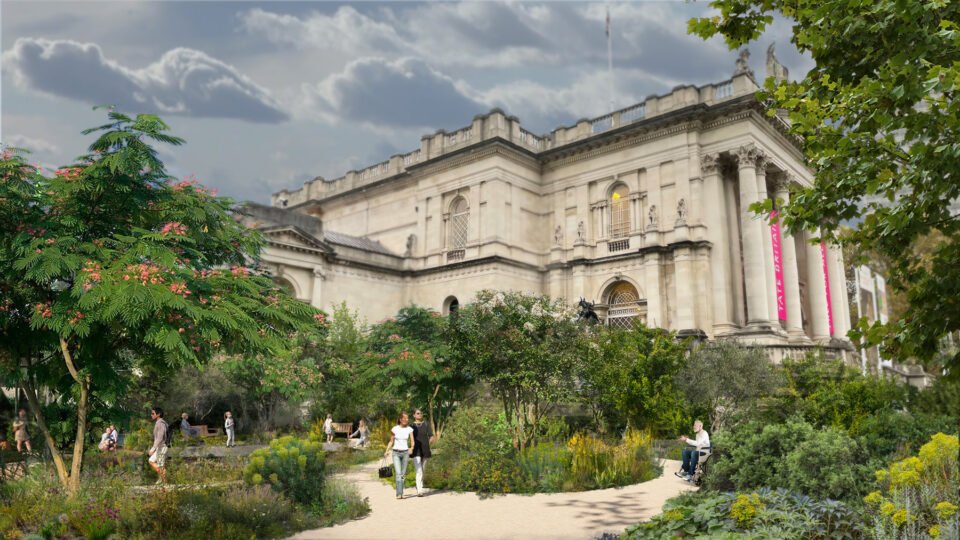Two plain lawns in front of Tate Britain are to be transformed into a wildlife-friendly garden over the next year, and the gallery has shown off the initial designs.
The two lawns aren’t that heavily used these days, although they have been open spaces for outdoor art installations on occasions and, during WWII, were turned into allotments by the gallery staff. Last year, Tate Britain announced plans to replace the lawns with a new garden and has been working with the designer and architects on the scheme.


Placing nature, art and community at its centre, the new garden aims to be a varied environment carefully designed to complement and enhance the gallery’s neo-classical architecture and withstand the UK’s changing climate.
The new Clore Garden features an organic pattern of planted spaces and a network of fully accessible pathways to explore. A reimagined café terrace and a freestanding classroom are included, as well as space for outdoor programmes, talks and activities. Art and horticulture will be brought together, with sculptures by British artists from Tate’s collection integrated throughout the landscape.
The first-stage designs have been created by the landscape architect Tom Stuart-Smith Studio and architects Feilden Fowles.
A highlight will be the introduction of a new single storey, light-weight garden classroom by architecture studio Feilden Fowles. This will offer a flexible sheltered space for learning activities opening out directly onto the garden.


Alex Farquharson, Director, Tate Britain said: “We are enormously excited to share a first look at designs for Tate Britain’s new garden, a significant green space uniting art and nature and encouraging biodiversity. These sumptuous, innovative designs demonstrate the role museums can play in our cities, places where contemplation and relaxation can go hand in hand with joy and creativity. We hope the garden will offer new ways to engage with Tate’s Collection, for both visitors and local residents alike.”
The newly renamed Clore Garden is due to open in 2026.

